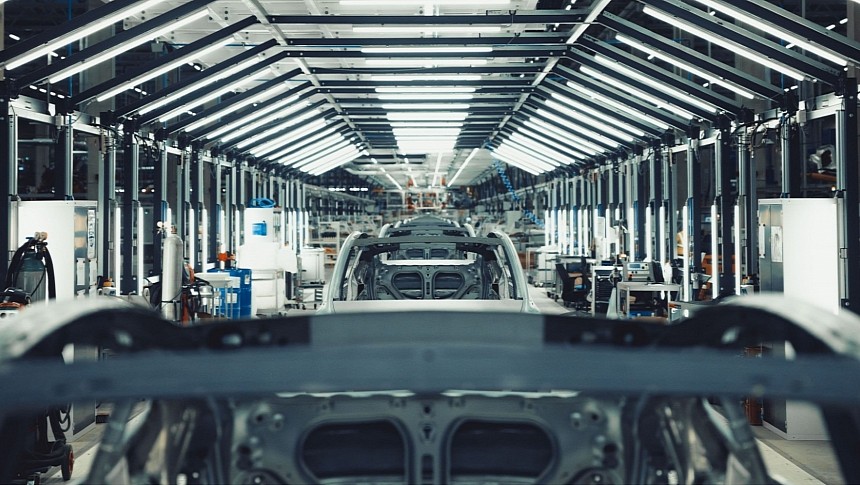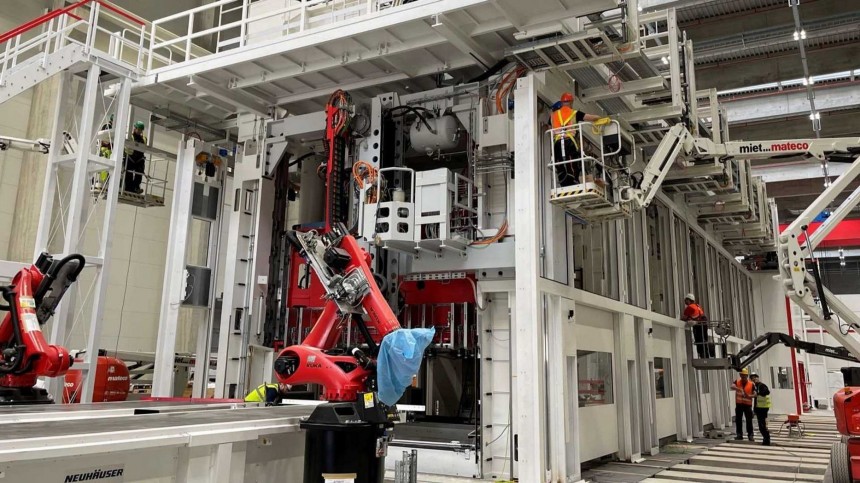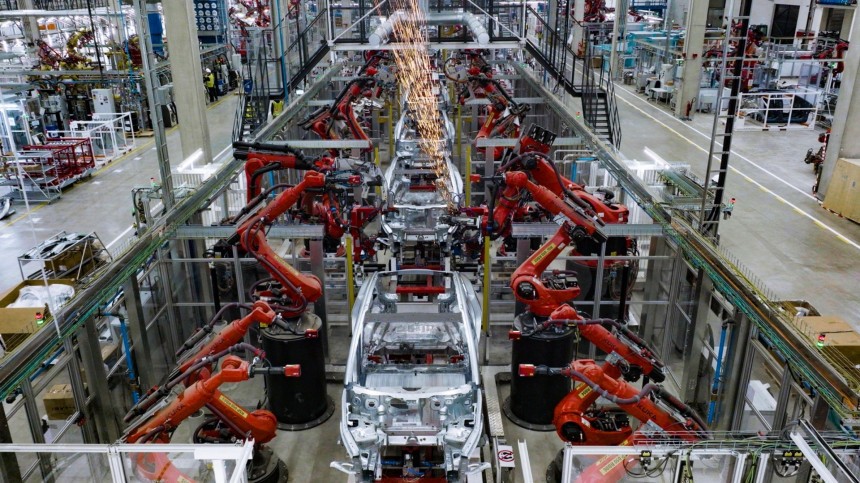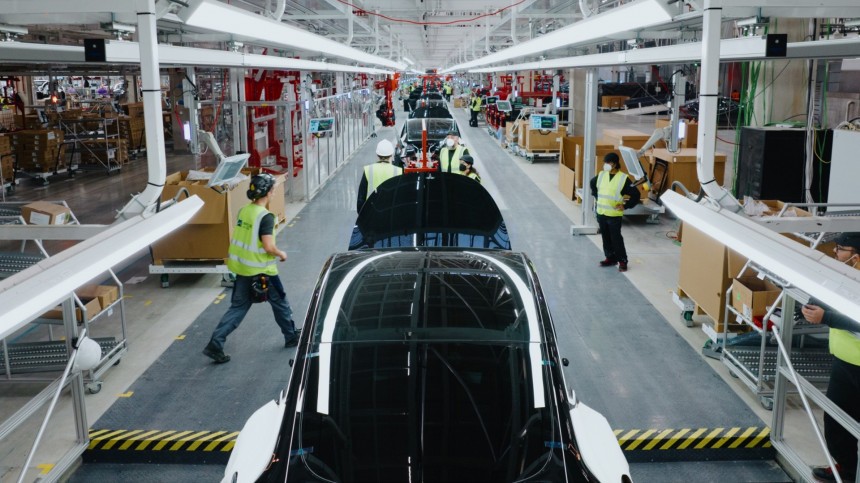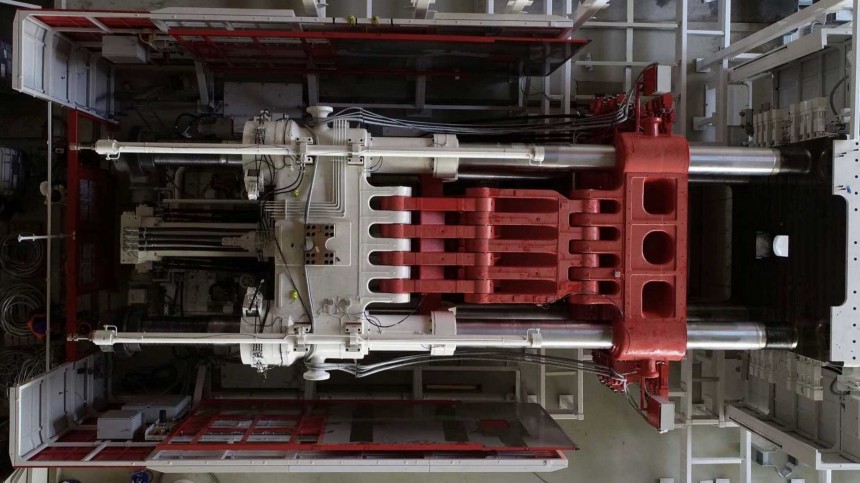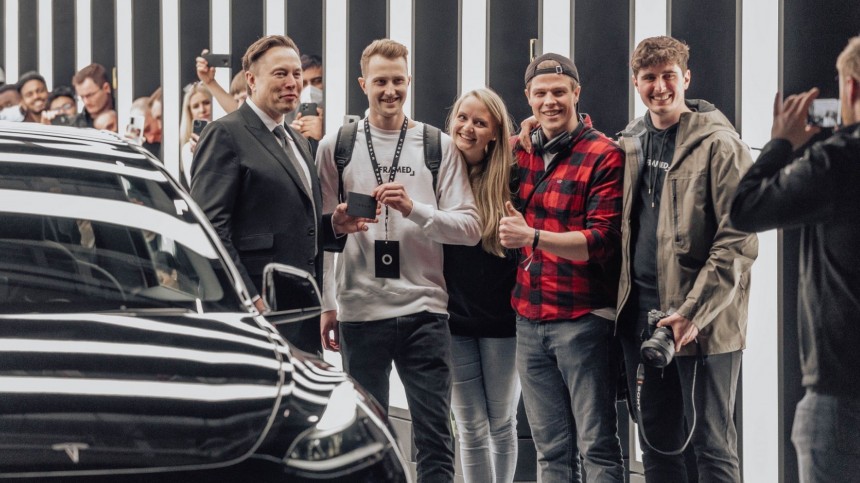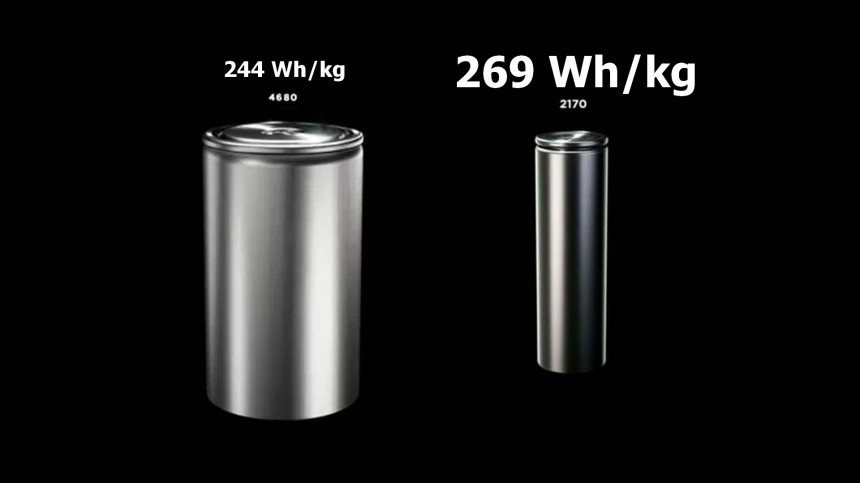The Tesla Files would have been a massive scandal if the name of the company involved was different. It would have also reached more people if it were not written in German – despite the amazing work Handelsblatt has done and is still doing. Not surprisingly, Germany has other outstanding journalists working elsewhere. Stern has a fair amount of them and published a demolishing story about the American BEV maker. I'm sure you are hearing about it for the first time here, which is indeed a sin.
A team of reporters from the German magazine dived deep into government documents to reveal damning facts about how Tesla works. Two of the journalists even landed jobs at the factory in Grünheide for some time to see how things worked there. Their experiences and the other pieces of evidence led them to wonder how German politicians allowed the company to repeat many of the wrongdoings documented by the American press in the US for years. Unfortunately, the list is long.
Before the Grünheide facility started its operations, I covered the concerns of area residents who feared they would be left with no water to drink should any leaks happen in the factory. They were dismissed as hippies who did not want the region to have a modern factory from the world's most valuable carmaker. Not even warnings from the Wasserverband Strausberg-Erkner (Strausberg-Erkner Water Association, or WSE) helped. Stern revealed that at least 26 spills, fires, and other incidents that could affect water reserves have happened at the plant.
According to André Bähler, we should imagine groundwater as "a bowl of semolina filled with water," not like "an underground river." It moves slowly through rock and sand. In Grünheide, the water is pretty close to the surface, at a maximum depth of 7 meters (23 feet). That means that anything that hits the soil may easily infiltrate it to contaminate the groundwater. The WSE boss stated there are reserves poisoned during the Second World War that still can't be used. The WSE forbids farmers to keep more than 50 cows in the area because their manure could poison the water. How about a factory dealing with toxic chemicals?
The Neuenhagen mayor threatened to sue WSE because it would not allow a data center to have water. Allowing Tesla to use it was also a concern. Bähler said the state government was sacrificing drinking water supplies for economic interests. That made him a persona non grata around Tesla, which kept building its factory with special permits and exemptions. The company even managed to insert piles in a drinking water protection area, something the German law forbids.
The Ministerium für Landwirtschaft, Umwelt und Klimaschutz (MLUK, or Brandenburg's State Office for the Environment) could have started inspecting the Grünheide factory with more attention. Instead, it transferred the control of the groundwater under the factory terrain to Tesla in November 2022. As the journalists ironically observed, the company that had to pay several fines for environmental violations in California was supposed to protect the drinking water of 170,000 people. Bähler was not informed of that inspection control transfer.
Among the 26 potentially hazardous events that happened at the Tesla factory in Grünheide, one involves an illegal fuel station that the American BEV maker hid for months under a white party tent. Before that, Tesla only used tents to build cars.
As ironic as this is, the fact is that 250 liters of diesel leaked on May 4, 2023. That happened when a truck driver tried to refuel and shortly left the illegal station after inserting the nozzle into the tank. When he got back, the nozzle had dropped and was spilling diesel "uncontrollably" on the ground. The authorities only discovered the hidden fuel station on July 21, ordering its removal. There's no word about fines or other legal consequences for Tesla.
There are pretty dark reports of what happens at Giga Grünheide. Stern talked to Tayfur Karaboga, a former Tesla worker who lost his job after warning about safety risks in his activity. In January, Karaboga was told to turn a workshop into a final assembly hall. That would demand him to move a power outlet. To perform that safely, he would need to turn off power in that workshop, but he had no clearance to do so. His shift supervisor told him to do that with the power on. Predictably. Karaboga was electrocuted. Luckily, he's still alive. The former worker also reported hearing "booming alarm sirens and frequent emergency calls" all the time.
Jörg Schneider is another former Tesla employee that Stern interviewed. Ironically, he was a shift manager and had to care for 50 workers. He said people used to collapse from exhaustion at the final assembly hall. Karaboga reported the same thing, which confirms the report PingWest wrote about Giga Shanghai. The Chinese outlet compared the factory to a modern sweatshop and was sued by Tesla. As a result, the story is no longer online, but you can still find copies around the internet. Schneider said that people are getting hurt at Tesla and that he never saw any other company work so ruthlessly. There are reports of electric shocks (such as the one Karaboga endured), scalding, hydrochloric acid, amputated limbs, and a long etcetera.
According to the German magazine, Giga Grünheide had 247 ambulance or helicopter requests only in its first operation year. Considering it was officially opened on March 22, 2022, that would be 247 incidents for 285 days if the plant worked all weekends. Exclude them and German holidays, and you'll end with 247 emergencies in 195 days (1.27 per day). From June to November of last year alone, 190 work accidents happened. Divided by 126 working days, that's 1.51 cases daily. Stern related that to the number of employees and concluded that this is three times as many occurrences in the same time frame as Audi had at its Ingolstadt plant. To make matters worse, all the people the German magazine interviewed said the factory's air is impregnated with aluminum dust. This substance is considered hazardous.
Exposure to this dust can cause "metal fume fever," which has symptoms similar to those caused by flu, as well as a metallic taste in the mouth. In more severe cases, it can lead to pulmonary fibrosis. Aluminum production is carcinogenic, even if the metal itself isn't. Giga Grünheide workers said the dust settles in their noses, ears, and lungs. Tesla could avoid that with industrial suction hoods. The German factory has some, but not enough. Sick leaves at the factory are frequent.
One of the two Stern reporters who worked at Giga Grünheide said she was in the motor production department. Once, the machines produced several defective components that the quality inspector "only partially sorted out" – even after saying: "We only produced scrap parts today." In other words, these defective parts are in some vehicles because there is a target for a certain quantity of components that has to be met at all costs. Too bad customers may end up paying for that.
The reporters also said that some machines would break and wait all day long for repairs. Dangerous situations were not informed to workers, who had to keep business as usual despite stuff like roof insulation falling off. One of the journalists saw a man with a helmet picking up a metal part and immediately asked the manager to give them helmets so that they could work there. They were sent to another station – without helmets.
Things for this reporter started getting weird when her supervisor offered her a fast career at the factory, even without being qualified for the more technical position. The supervisor said he could easily put her there. All she had to do was to listen carefully. After all, she was his "flower." That matches the reports of lack of training for Tesla employees, which also explains the emergencies and the quality issues with the vehicles. One example is that shift supervisors have to have "a master craftsman's certificate," something Tesla allegedly does not require. Apparently, you may get there if you are somebody's "flower."
The reporter did not talk about a sexual harassment attempt, but it certainly sounded like flirting. She decided to leave the company after the helmet episode. The journalist said she was sick and received a "get well soon" message from her supervisor, asking who would do his job that day.
The Cybertruck and the Semi could have made Musk change his mind. These new batteries would be necessary for these vehicles, but nothing prevented Tesla from kicking off production in Germany and starting it a few days later in the US. On top of that, the made-in-Texas Model Y was the first vehicle to have 4680 cells. That shows it would be a perfect match for the only BEV the company produces in Europe. The fact that these batteries delivered none of the advantages Tesla said they would offer is another explanation.
If the plans had not changed, Tesla would receive €1.135 billion in a program that aimed to grant a maximum of €2.9 billion to companies all over the European Union. That's not something other companies would have ignored. Stern asked how much taxpayer money was spent trying to help Tesla receive that grant, but the Brandenburg government did not quantify it. It also did not explain why so many of the crucial data the magazine asked was not available.
The Brandenburg government did not disclose why its politicians were always available when Tesla wanted to talk. It usually takes weeks to have a meeting with them. It also failed to say why the BEV maker was not adequately investigated for the safety and environmental hazards the factory presented so far. Brandenburg's Prime Minister Dietmar Woidke tried to address the story with an interview for Tagesspiegel on September 29, 2023, but Stern easily dismissed all his allegations. Honestly, it made the government and the politicians involved look even worse.
If you read German, you should definitely take a look at the texts yourself. It is first-class journalism with a very relevant story, making it a privilege for German speakers. If you don't, this summary aims to bring awareness to the risks Tesla's German factory poses to residents and workers by how the company runs it. As usual, Tesla did not reply to a single question Stern sent. Although we should be already accustomed to that, the truth is the BEV maker does not answer to anyone – unless we're talking about the CCP. China is the only place where Tesla keeps an active press department and performs recalls even before the government investigates anything. Things should remain that way while politicians worry more about votes and popularity than protecting those who can cast a ballot.
Groundwater pollution risks
Water pollution and employee safety are among the main concerns brought up by Stern, but there are more blunders in the series of stories it produced. The way Tesla hires and deals with its staff sheds light on several mind-boggling defects the vehicles present. The German factory itself is described as a Tower of Babel, with supervisors speaking German to workers who do not command the language. Some others who get the message may help spread the instructions, but supervisors do not care if they do. Wondering about how that even works is a given. Realizing it often doesn't is no surprise.Before the Grünheide facility started its operations, I covered the concerns of area residents who feared they would be left with no water to drink should any leaks happen in the factory. They were dismissed as hippies who did not want the region to have a modern factory from the world's most valuable carmaker. Not even warnings from the Wasserverband Strausberg-Erkner (Strausberg-Erkner Water Association, or WSE) helped. Stern revealed that at least 26 spills, fires, and other incidents that could affect water reserves have happened at the plant.
The Neuenhagen mayor threatened to sue WSE because it would not allow a data center to have water. Allowing Tesla to use it was also a concern. Bähler said the state government was sacrificing drinking water supplies for economic interests. That made him a persona non grata around Tesla, which kept building its factory with special permits and exemptions. The company even managed to insert piles in a drinking water protection area, something the German law forbids.
The Ministerium für Landwirtschaft, Umwelt und Klimaschutz (MLUK, or Brandenburg's State Office for the Environment) could have started inspecting the Grünheide factory with more attention. Instead, it transferred the control of the groundwater under the factory terrain to Tesla in November 2022. As the journalists ironically observed, the company that had to pay several fines for environmental violations in California was supposed to protect the drinking water of 170,000 people. Bähler was not informed of that inspection control transfer.
As ironic as this is, the fact is that 250 liters of diesel leaked on May 4, 2023. That happened when a truck driver tried to refuel and shortly left the illegal station after inserting the nozzle into the tank. When he got back, the nozzle had dropped and was spilling diesel "uncontrollably" on the ground. The authorities only discovered the hidden fuel station on July 21, ordering its removal. There's no word about fines or other legal consequences for Tesla.
The people who make Tesla vehicles
When it comes to employee safety, the Stern team discovered that these folks get hurt every day in Tesla's German factory. Considering the company's records in its home country, that is hardly a surprise. A 2019 investigation revealed that the Fremont factory was three times more likely to violate health and safety work regulations than the other ten largest American factories combined. Tesla was also accused of concealing work accidents. Whenever one happened, the affected employee had to reach the hospital by taxi or Uber. That made ambulance requirements drop. In other words, the company could argue the accident had nothing to do with the work environment.Jörg Schneider is another former Tesla employee that Stern interviewed. Ironically, he was a shift manager and had to care for 50 workers. He said people used to collapse from exhaustion at the final assembly hall. Karaboga reported the same thing, which confirms the report PingWest wrote about Giga Shanghai. The Chinese outlet compared the factory to a modern sweatshop and was sued by Tesla. As a result, the story is no longer online, but you can still find copies around the internet. Schneider said that people are getting hurt at Tesla and that he never saw any other company work so ruthlessly. There are reports of electric shocks (such as the one Karaboga endured), scalding, hydrochloric acid, amputated limbs, and a long etcetera.
According to the German magazine, Giga Grünheide had 247 ambulance or helicopter requests only in its first operation year. Considering it was officially opened on March 22, 2022, that would be 247 incidents for 285 days if the plant worked all weekends. Exclude them and German holidays, and you'll end with 247 emergencies in 195 days (1.27 per day). From June to November of last year alone, 190 work accidents happened. Divided by 126 working days, that's 1.51 cases daily. Stern related that to the number of employees and concluded that this is three times as many occurrences in the same time frame as Audi had at its Ingolstadt plant. To make matters worse, all the people the German magazine interviewed said the factory's air is impregnated with aluminum dust. This substance is considered hazardous.
Quality control?
If none of that makes you wonder about buying a Tesla, Stern warns about how it all affects the products. Workers told the German magazine that the pressure to deliver more and more units is an effort to drive Tesla's share prices up. One of the helpers in the final assembly line said they were instructed to omit a screw for the holder of an airbag if the vehicles just passed too quickly through their station. It would be a measure to save time. Tinkerers among us will probably want to check their made-in-Germany Model Y units afterward. This rush to deliver vehicles, no matter what, explains thin and peeling paint, detaching steering wheels, panel gaps, and even more severe issues such as motor failures.One of the two Stern reporters who worked at Giga Grünheide said she was in the motor production department. Once, the machines produced several defective components that the quality inspector "only partially sorted out" – even after saying: "We only produced scrap parts today." In other words, these defective parts are in some vehicles because there is a target for a certain quantity of components that has to be met at all costs. Too bad customers may end up paying for that.
Things for this reporter started getting weird when her supervisor offered her a fast career at the factory, even without being qualified for the more technical position. The supervisor said he could easily put her there. All she had to do was to listen carefully. After all, she was his "flower." That matches the reports of lack of training for Tesla employees, which also explains the emergencies and the quality issues with the vehicles. One example is that shift supervisors have to have "a master craftsman's certificate," something Tesla allegedly does not require. Apparently, you may get there if you are somebody's "flower."
The reporter did not talk about a sexual harassment attempt, but it certainly sounded like flirting. She decided to leave the company after the helmet episode. The journalist said she was sick and received a "get well soon" message from her supervisor, asking who would do his job that day.
Politicians at Tesla's service
All this should have received more attention from German politicians, but Stern discovered they played quite a subservient role in the whole story. Attracting Tesla to Grünheide would ensure political dividends, so the company was granted unusual attention. Brandenburg's government offered to help Tesla receive a grant for its battery factory. After giving officials a lot of work, Elon Musk decided he did not want to have this plant in Germany anymore because it demanded that the new cell be first manufactured in that country. We're talking about the 4680 cells.If the plans had not changed, Tesla would receive €1.135 billion in a program that aimed to grant a maximum of €2.9 billion to companies all over the European Union. That's not something other companies would have ignored. Stern asked how much taxpayer money was spent trying to help Tesla receive that grant, but the Brandenburg government did not quantify it. It also did not explain why so many of the crucial data the magazine asked was not available.
The Brandenburg government did not disclose why its politicians were always available when Tesla wanted to talk. It usually takes weeks to have a meeting with them. It also failed to say why the BEV maker was not adequately investigated for the safety and environmental hazards the factory presented so far. Brandenburg's Prime Minister Dietmar Woidke tried to address the story with an interview for Tagesspiegel on September 29, 2023, but Stern easily dismissed all his allegations. Honestly, it made the government and the politicians involved look even worse.
If you read German, you should definitely take a look at the texts yourself. It is first-class journalism with a very relevant story, making it a privilege for German speakers. If you don't, this summary aims to bring awareness to the risks Tesla's German factory poses to residents and workers by how the company runs it. As usual, Tesla did not reply to a single question Stern sent. Although we should be already accustomed to that, the truth is the BEV maker does not answer to anyone – unless we're talking about the CCP. China is the only place where Tesla keeps an active press department and performs recalls even before the government investigates anything. Things should remain that way while politicians worry more about votes and popularity than protecting those who can cast a ballot.
